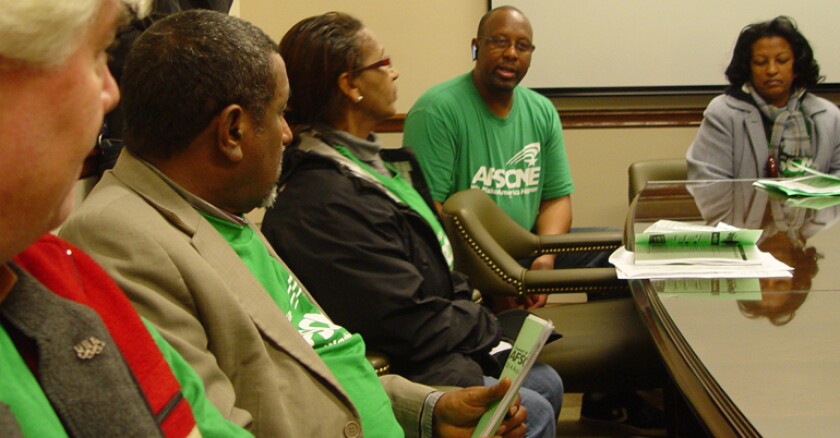This appears in the free Management e-newsletter. Click to subscribe.
To try to improve employee engagement and morale, state and local governments use a range of tactics that include flexible work schedules, mentoring, management training and celebratory luncheons. In Washington, where all non-management employees pay union dues, the state's Employment Security Department (ESD) took a different approach and partnered with its employee union.
ESD can be a difficult place to work as far as morale goes. Because the agency handles unemployment insurance and job programs and relies heavily on federal funding, it runs in boom and bust cycles. When the economy is bad and the jobless are lining up for help, the agency is always looking to hire. But once the economy starts improving, layoffs are commonplace. After the election of a new governor, the appointment of a new agency commissioner and three rounds of layoffs, Mary Frost, the agency's deputy assistant commissioner for the human resources and operational support division, said everyone knew the department needed to do something to boost employee morale.
To start, the agency partnered with a consultant to figure out how disengaged the workforce was and find the root causes. Then, in June 2013, she brought together 50 union members from different classifications across the state to meet with the consultant and answer four questions about employee engagement: Where have we been?; How did we get there?; Where are we going?; and How do we get there?.
What they found was a lack of consensus among the local worksites. While some employees felt well supported and enjoyed coming to work, others felt the complete opposite. This, Frost said, indicated that focusing on local leaders would be of utmost importance to the success of the project because they set the tone for their offices.
Since that initial meeting, Frost gained the support of the agency's commissioner who pushed to make employee engagement a priority, and the Washington Federation of State Employees (WFSE) offered $15,000 for more meetings to investigate and improve workers' satisfaction.
"[Our members] felt that this process would create a working environment and culture that would allow the frontline staff to work with management to help improve services to the public and create a working environment where all workers felt valued," said Sue Henricksen, WFSE president. "It was clear to us and to management that around 85 percent of the workforce was disengaged. We both recognized that unless we worked collaboratively, nothing would change. Morale would remain low, and productivity would suffer."
According to Frost, most unions around the country are still doing business the old way and don't recognize that there are areas where labor and management can work together. It's more typical of unions to be reactive than proactive and handle employee dissatisfaction at the bargaining table instead of collaborating with employers beforehand.
"It's an unusual model, but it's doable ... [and] we're hoping that by doing this, we'll have less demands during bargaining," she said.
With the initial rounds of meetings complete, the joint ESD/WFSE group will begin surveying and tracking every employee and manager's feelings about their opportunities for promotion, passion and job satisfaction as well as whether they feel supported and valued. They also plan to establish employee engagement teams in local offices by December who are responsible for initiating conversations with workers and managers, developing solutions for problems and empowering employees. The teams will consist of a variety of employees who display certain qualities the agency wants others to emulate.
"Not all ideas will be implemented," said Henricksen. "But hearing them is an important part of the process. Too often we operate in a crisis mode. This is a proactive model and encourages communication and collaboration."
Once they've surveyed everyone, the agency intends to create a robust set of metrics to make sure they're consistently improving. But even with just more than a year under its belt, Frost said the project is showing results.
"[With] just the efforts we've made so far ... there is a movement to kind of lift yourself up out of the doldrums."
Both Frost and Henricksen are optimistic that the engagement effort will be beneficial to employees and the agency as a whole.
"Working in any bureaucracy is difficult," said Henricksen. "There are rules and regulations related to funding; public criticism is high; staffing levels are low; workload is overwhelming; and we begin to lose our focus. This model allows us to step back, breathe, remember our mission, remember why we decided to work in this field, realize the impact we have on the lives of our citizens and decide how we will meet the mission and goals of the agency together."









